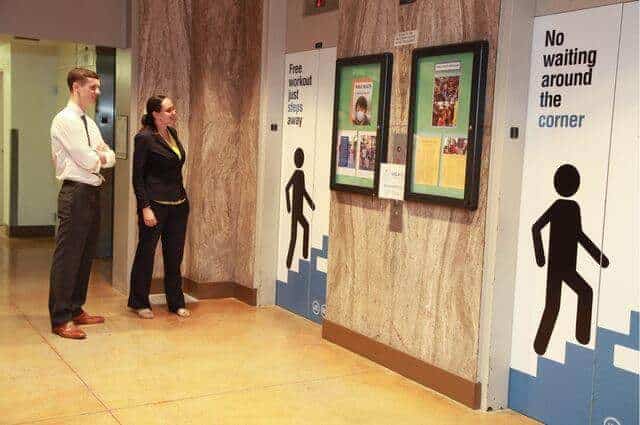If you spend hours commuting to work and sitting at your desk all day, recent studies about the health hazards of too much sitting probably have hit home.
“Humans are not biologically designed to be sedentary,” says Elisa Terry, program director of theUCLA Recreation Fitwell program. “The more you sit, the unhealthier it is for your body.”
Being sedentary increases risks for diabetes, high blood pressure and poor circulation.
“In turn, this increases the chances for heart attack, stroke and even death,” cautions Dr. Daniel Vigil, associate clinical professor at UCLA’s David Geffen School of Medicine. “Moving throughout the day can help reduce those risks.”
For those who can’t manage the American Heart Association’s recommended 75 minutes weekly of vigorous sweat-breaking exercise, the alternative is 150 minutes of low-level exercise. That’s 30 minutes per day, five days a week.
“The good news is those 30 minutes can be any fashion of things that you incorporate into your work day,” says Vigil. “The point is to move throughout the day, preferably at least once an hour.”
The steps you take can begin in your office.
Move your wastebasket so that you have to get up to toss your trash or move items within hands’ reach farther away. Walk to a colleague’s desk instead of emailing or calling. Walk to the water cooler throughout the day and then take the stairs to a restroom on another floor. Do not work through lunch at your desk. Instead, take a break and you will return to work more productive.
Jennifer Mempin, manager of UCLA Health’s injury prevention program, says that many people use a standing desk as a tactic to avoid sitting all day.
“Standing desks are very popular, but just remember that whether you sit or stand at your desk, just don’t do either for more than 30 to 45 minutes at time,” says Mempin.
Here are six tips to incorporate movement into your day:
- Deskercise with resistance bands. Use a resistance band to do foot curls and arm stretches at your desk.
- Take the stairs. Climbing the stairs is an excellent way to build in quick bursts of exercise over the course of the day and help you reach your goal of at least 30 minutes.
- Don’t waste time waiting. When standing in line, use that time stretch your neck and shoulders; bend your knees for flexibility.
- Mid-meeting stretch. Lead a simple five-minute stretch break in the middle of any meeting that lasts longer than an hour and a half. It will make everyone feel good and re-energize the group.
- Park your car farther away. If you park your car far away from the entrance when you’re at the mall, do the same at work. This is an easy way to build in some time walking, which is one of the best things you can do for your health. Likewise, public transit riders can bypass the most convenient stop and walk to a few blocks away to get in a few minutes of exercise.
- Find apps that remind you to move. Apps that count your steps throughout the day provide immediate feedback and are great motivators. You can also use apps to remind you to move while at your desk. Studies show that taking small breaks and refreshers at regular intervals throughout the workday greatly improves efficiency and overall health. UCLA’s Fitwell program has an alert called MOVE MAIL that sends twice daily emails that include ideas for mini-workouts, walks and other movement ideas. See if your organization offers software that reminds you to take a break. This tool analyzes your computer work patterns and provides prompts for physical activity breaks.
“We need to change our culture and think differently about incorporating movement into our day,” says Terry. “Every 30 seconds, one minute or five minutes that you move adds up throughout the day.”


